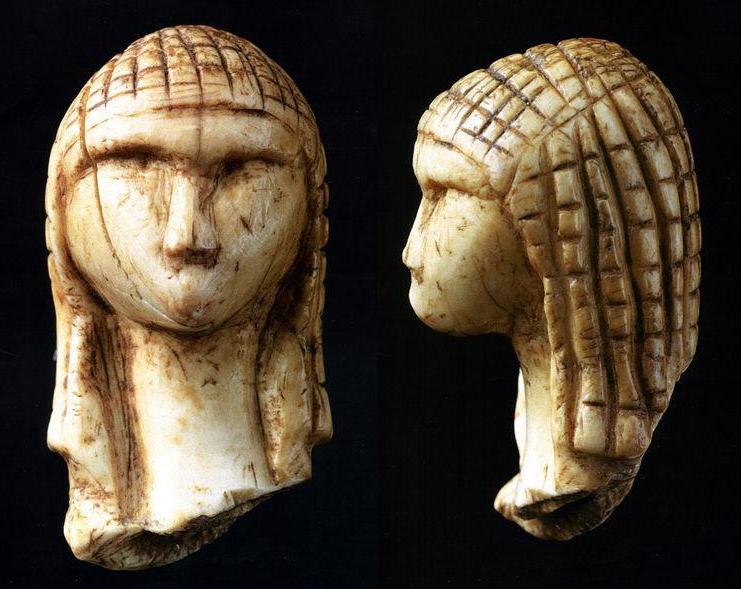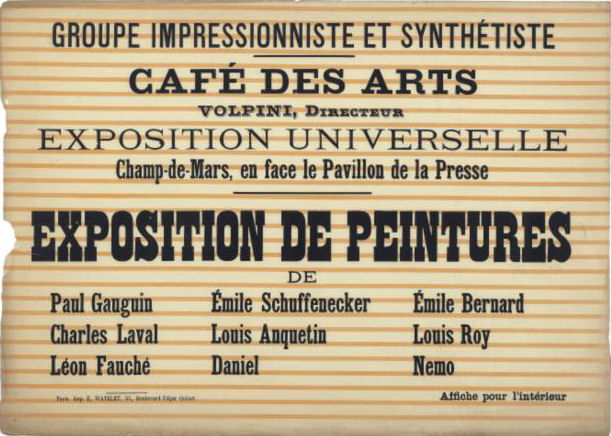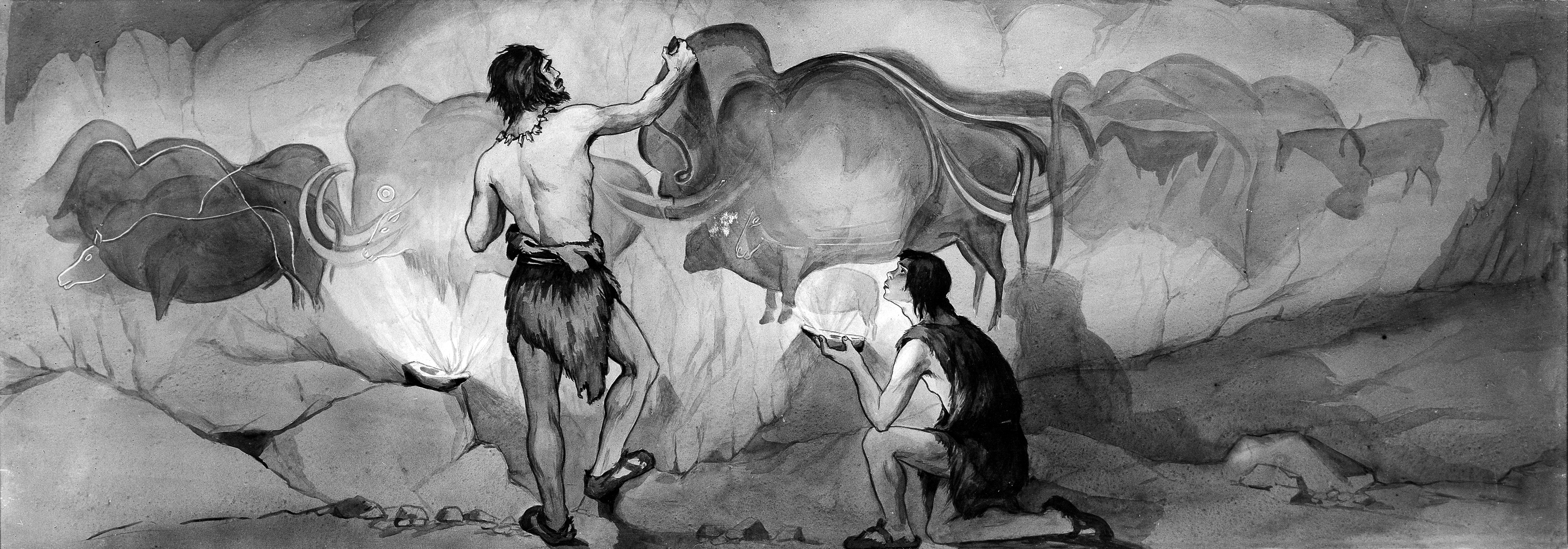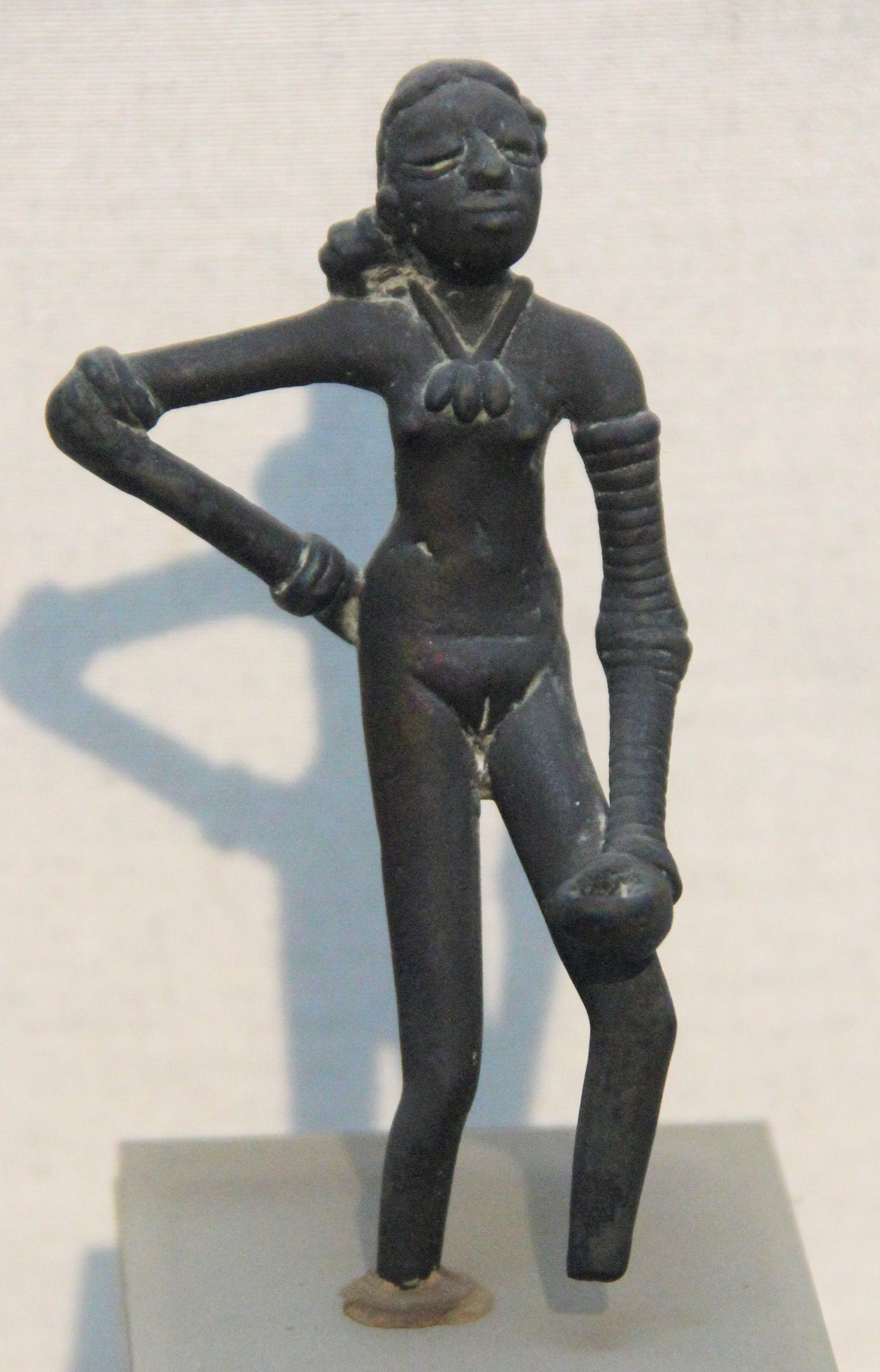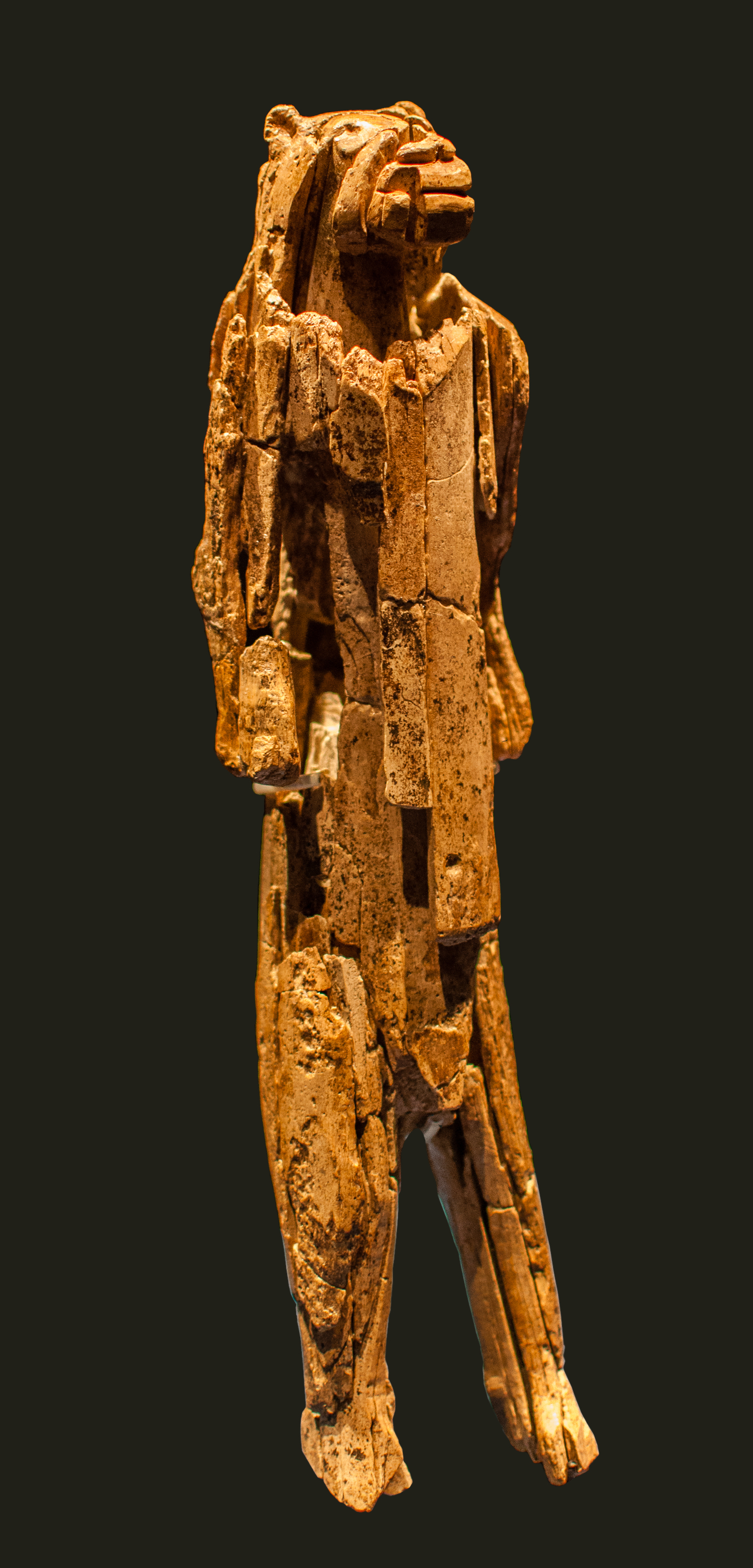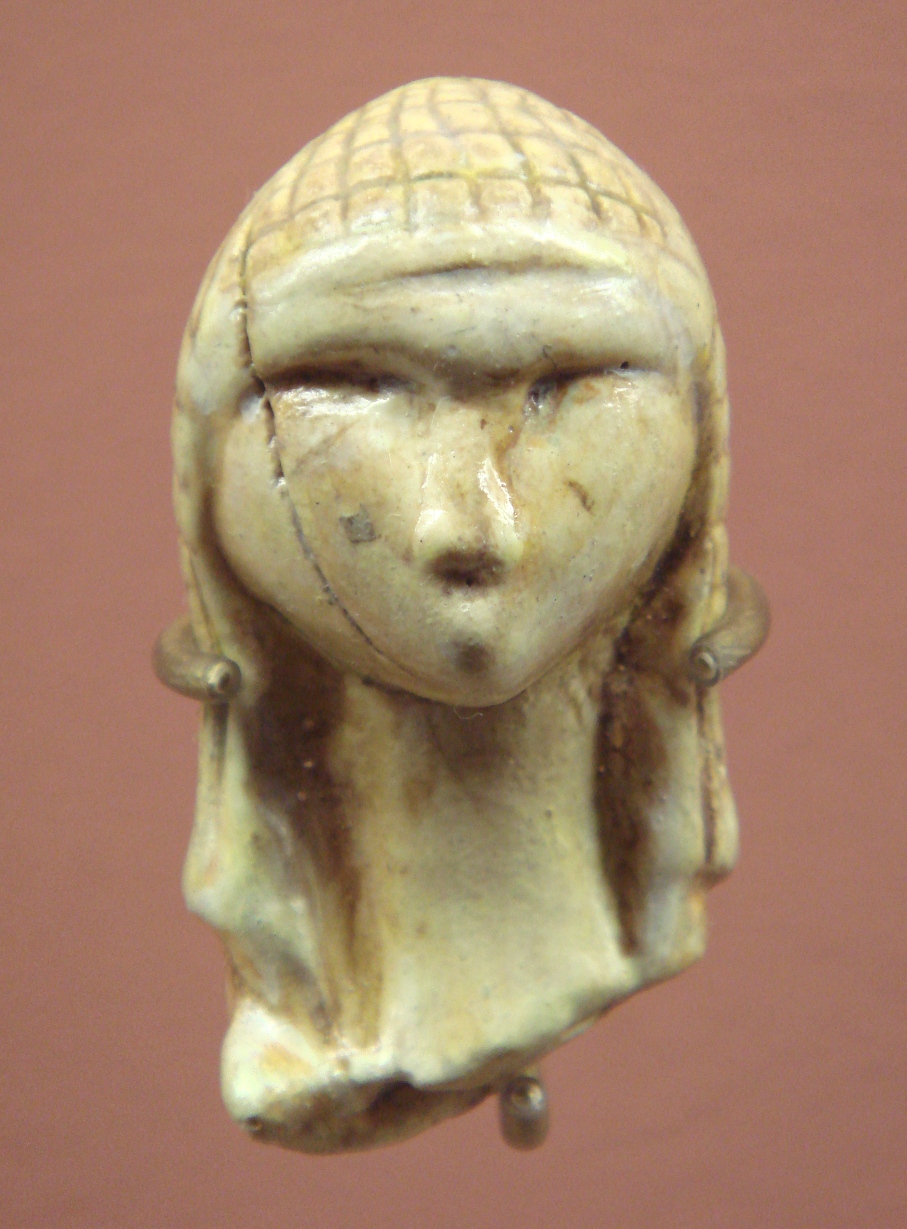|
French Art
French art consists of the visual and plastic arts (including French architecture, woodwork, textiles, and ceramics) originating from the geographical area of France. Modern France was the main centre for the European art of the Upper Paleolithic, then left many megalithic monuments, and in the Iron Age many of the most impressive finds of early Celtic art. The Gallo-Roman period left a distinctive provincial style of sculpture, and the region around the modern Franco-German border led the empire in the mass production of finely decorated Ancient Roman pottery, which was exported to Italy and elsewhere on a large scale. With Merovingian art the story of French styles as a distinct and influential element in the wider development of the art of Christian Europe begins. Romanesque and Gothic architecture flourished in medieval France with Gothic architecture originating from the Île-de-France and Picardy regions of northern France. During the Renaissance led to Italy becoming ... [...More Info...] [...Related Items...] OR: [Wikipedia] [Google] [Baidu] |
Post-Impressionism
Post-Impressionism (also spelled Postimpressionism) was a predominantly French art movement that developed roughly between 1886 and 1905, from the last Impressionist exhibition to the birth of Fauvism. Post-Impressionism emerged as a reaction against Impressionists' concern for the naturalistic depiction of light and colour. Its broad emphasis on abstract qualities or symbolic content means Post-Impressionism encompasses Les Nabis, Neo-Impressionism, Symbolism, Cloisonnism, the Pont-Aven School, and Synthetism, along with some later Impressionists' work. The movement's principal artists were Paul Cézanne (known as the father of Post-Impressionism), Paul Gauguin, Vincent van Gogh and Georges Seurat. The term Post-Impressionism was first used by art critic Roger Fry in 1906.Peter Morrin, Judith Zilczer, William C. Agee, ''The Advent of Modernism. Post-Impressionism and North American Art, 1900-1918'', High Museum of Art, 1986 Critic Frank Rutter in a review of the Salon ... [...More Info...] [...Related Items...] OR: [Wikipedia] [Google] [Baidu] |
Pech Merle
Pech Merle is a French hillside cave at Cabrerets, in the Lot département of the Occitania Occitania is the historical region in Southern Europe where the Occitan language was historically spoken and where it is sometimes used as a second language. This cultural area roughly encompasses much of the southern third of France (except ... region, about 32 kilometres (19.88 miles) east of Cahors, by road. It is one of the few pre-historic art, prehistoric cave painting sites in France that remains open to the general public, albeit with an entry fee. Encompassing two levels and spanning over 2 km (1.24 mi) in area—of which only are open to the public—are caverns, wells and sloping tunnels, the walls of which are painted with dramatic, prehistoric murals dating from the Gravettian culture (some 25,000 years BC). But some of the paintings and engravings may date from the later Magdalenian era (16,000 years BC). The cave itself was created over 2 Million y ... [...More Info...] [...Related Items...] OR: [Wikipedia] [Google] [Baidu] |
Cave Painting
In archaeology, cave paintings are a type of parietal art (which category also includes petroglyphs, or engravings), found on the wall or ceilings of caves. The term usually implies prehistoric art, prehistoric origin. These paintings were often created by ''Human, Homo sapiens'', but also Denisovan, Denisovans and Neanderthal, Neanderthals; other species in the same ''Homo'' genus. Discussion around prehistoric art is important in understanding the history of ''Homo sapiens'' and how human beings have come to have unique abstract thoughts. Some point to these prehistoric paintings as possible examples of creativity, spirituality, and sentimental thinking in prehistoric humans. The oldest known are more than 40,000 years old (art of the Upper Paleolithic) and found in the caves in the district of Maros (Sulawesi, Indonesia). The oldest are often constructed from hand stencils and simple geometric shapes.M. Aubert et al., "Pleistocene cave art from Sulawesi, Indonesia", ''Nature'' ... [...More Info...] [...Related Items...] OR: [Wikipedia] [Google] [Baidu] |
Magdalenian
Magdalenian cultures (also Madelenian; ) are later cultures of the Upper Paleolithic and Mesolithic in western Europe. They date from around 17,000 to 12,000 years before present. It is named after the type site of Abri de la Madeleine, a rock shelter () located in the Vézère valley of Tursac in Dordogne, France. Édouard Lartet and Henry Christy originally termed the period ''L'âge du renne'' "the age of the reindeer". They conducted the first archaeological excavation of the type site, publishing in 1875. The Magdalenian is associated with reindeer hunters. Magdalenian sites contain extensive evidence for the hunting of red deer, wild horses, and other megafauna present in Europe toward the end of the Last Glacial Period. The culture was geographically widespread, and later Magdalenian sites stretched from Portugal in the west to Poland in the east, and as far north as France, the Channel Islands, England, and Wales. Besides la Madeleine, the chief stations of the Ma ... [...More Info...] [...Related Items...] OR: [Wikipedia] [Google] [Baidu] |
Gravettian
The Gravettian is an archaeological industry of the European Upper Paleolithic that succeeded the Aurignacian circa 33,000 years BP. It is archaeologically the last European culture many consider unified, and had mostly disappeared by 22,000 BP, close to the Last Glacial Maximum, although some elements lasted until 17,000 BP. In modern-day Portugal, Spain and France, it was succeeded by the Solutrean and by the Epigravettian in Italy, the Balkans, Ukraine and Russia. The Gravettian culture is known for their artistic works including the famous Venus figurines, which were typically carved from either ivory or limestone. The culture was first identified at the site of La Gravette in the southwestern French department of Dordogne.Kipfer, Barbara Ann. "Encyclopedic Dictionary of Archaeology". Kluwer Academic/Plenum Publishers, 2000. P. 216. While historically assumed to represent a genetically homogenous group, recent analysis of ancient DNA sequences suggests tha ... [...More Info...] [...Related Items...] OR: [Wikipedia] [Google] [Baidu] |
Solutrean
The Solutrean industry is a relatively advanced flint tool-making style of the Upper Paleolithic of the Final Gravettian, from around 22,000 to 17,000 BP. Solutrean sites have been found in modern-day France, Spain and Portugal. Details The term ''Solutrean'' comes from the type-site of " Cros du Charnier", dating to around 21,000 years ago and located at Solutré, in east-central France near Mâcon. The Rock of Solutré site was discovered in 1866 by the French geologist and paleontologist Henry Testot-Ferry. It is now preserved as the Parc archéologique et botanique de Solutré. The industry was named by Gabriel de Mortillet to describe the second stage of his system of cave chronology, following the Mousterian, and he considered it synchronous with the third division of the Quaternary period. The era's finds include tools, ornamental beads, and bone pins as well as prehistoric art. Solutrean tool-making employed techniques not seen before and not rediscovere ... [...More Info...] [...Related Items...] OR: [Wikipedia] [Google] [Baidu] |
Aurignacian
The Aurignacian () is an archaeological industry of the Upper Paleolithic associated with Cro-Magnon, Early European modern humans (EEMH) lasting from 43,000 to 26,000 years ago. The Upper Paleolithic developed in Europe some time after the Levant, where the Emiran, Emiran period and the Ahmarian, Ahmarian period form the first periods of the Upper Paleolithic, corresponding to the first stages of the expansion of ''Homo sapiens'' out of Africa. They then migrated to Europe and created the first European culture of modern humans, the Aurignacian. The Proto-Aurignacian and the Early Aurignacian stages are dated between about 43,000 and 37,000 years ago. The Aurignacian proper lasted from about 37,000 to 33,000 years ago. A Late Aurignacian phase transitional with the Gravettian dates to about 33,000 to 26,000 years ago. The type site is the Cave of Aurignac, Haute-Garonne, south-west France. The main preceding period is the Mousterian of the Neanderthals. One of the oldest exa ... [...More Info...] [...Related Items...] OR: [Wikipedia] [Google] [Baidu] |
Châtelperronian
The Châtelperronian is a proposed industry of the Upper Palaeolithic, the existence of which is debated. It represents both the only Upper Palaeolithic industry made by Neanderthals and the earliest Upper Palaeolithic industry in central and southwestern France, as well as in northern Spain. It derives its name from Châtelperron, the French village closest to the type site, the cave La Grotte des Fées. The Châtelperronian lasted from c. 45,000 to c. 40,000 BP, and was preceded by the Mousterian industry. The industry produced denticulate stone tools, and a distinctive flint knife with a single cutting edge and a blunt, curved back. The use of ivory at Châtelperronian sites appears to be more frequent than that of the later Aurignacian, while antler tools have not been found. It is followed by the Aurignacian industry. Scholars who question its existence claim that it is an archaeological mix of Mousterian and Aurignacian layers. The Châtelperronian i ... [...More Info...] [...Related Items...] OR: [Wikipedia] [Google] [Baidu] |
Pre-historic Art
In the history of art, prehistoric art is all art produced in preliterate, Prehistory, prehistorical cultures beginning somewhere in very late geological history, and generally continuing until that culture either develops writing or other methods of record-keeping, or makes significant contact with another culture that has, and that makes some record of major historical events. At this point ancient art begins, for the older literate cultures. The end-date for what is covered by the term thus varies greatly between different parts of the world. The earliest human artifacts showing evidence of workmanship with an artistic purpose are the subject of some debate. It is clear that such workmanship existed 40,000 years ago in the Upper Paleolithic era, although it is quite possible that it began earlier. In September 2018, scientists reported the discovery of the earliest known drawing by ''Homo sapiens'', which is estimated to be 73,000 years old, much earlier than the 43,000 year ... [...More Info...] [...Related Items...] OR: [Wikipedia] [Google] [Baidu] |
Upper Palaeolithic
The Upper Paleolithic (or Upper Palaeolithic) is the third and last subdivision of the Paleolithic or Old Stone Age. Very broadly, it dates to between 50,000 and 12,000 years ago (the beginning of the Holocene), according to some theories coinciding with the appearance of behavioral modernity in early modern humans. It is followed by the Mesolithic. Anatomically modern humans (i.e. ''Homo sapiens'') are believed to have emerged in Africa around 300,000 years ago. It has been argued by some that their ways of life changed relatively little from that of archaic humans of the Middle Paleolithic, until about 50,000 years ago, when there was a marked increase in the diversity of artefacts found associated with modern human remains. This period coincides with the most common date assigned to expansion of modern humans from Africa throughout Asia and Eurasia, which may have contributed to the extinction of the Neanderthals. The Upper Paleolithic has the earliest known evide ... [...More Info...] [...Related Items...] OR: [Wikipedia] [Google] [Baidu] |
Venus Of Brassempouy
The Venus of Brassempouy (French: ''la Dame de Brassempouy'', , meaning "Lady of Brassempouy", or ''Dame à la Capuche'', "Lady with the Hood") is a fragmentary ivory figurine from the Upper Palaeolithic, apparently broken from a larger figure at some time unknown. It was discovered in a cave at Brassempouy, France in 1894. About 25,000 years old, it is one of the earliest known realistic representations of a human face. Discovery Brassempouy is a small village in the département in France, ''département'' of Landes (department), Landes in southwest France. Two caves near the village, 100 metres from each other, were among the first Paleolithic sites to be explored in France. They are known as the ''Galerie des Hyènes'' (Gallery of the Hyenas) and the ''Grotte du Pape'' (the "Grotto of the Pope"). The Venus of Brassempouy was discovered in the Grotto of the Pope in 1894, accompanied by at least eight other human figures. These may be an example of unfinished work, as if the arti ... [...More Info...] [...Related Items...] OR: [Wikipedia] [Google] [Baidu] |
